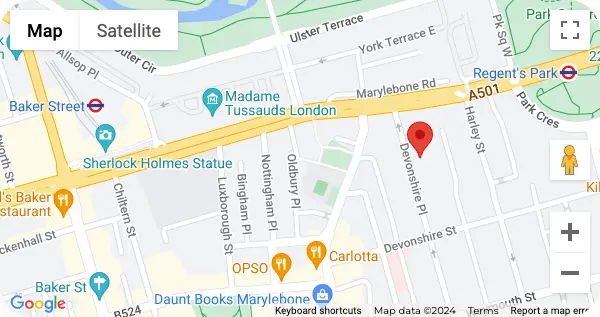Vitiligo symptoms and causes
Doctor-led diagnosis and treatment for vitiligo
★★★★★
20 Years of Safety: Trust in our 20 year track record and history of excellence
Award Winning Clinic: Over the last two decades we've received multiple awards
Dermatological
Non-surgical
Surgical
Expert care for a wide range of skin conditions, ensuring healthy, radiant skin.
Lesions & Bumps
Comprehensive care for skin lesions and bumps, promoting clear and healthy skin.
Lifting & Tightening
Advanced treatments to lift and lighten the skin, enhancing firmness and brightness.
Rejuvenation
Revitalize your skin with advanced treatments designed to restore a youthful glow.
Skin Treatments
Effective solutions for a variety of skin concerns, promoting clear and healthy skin.
Wellness
Holistic skincare approaches to support overall skin health and well-being.
Advanced, non-invasive treatments to rejuvenate your appearance without surgery.
Body Treatments
Transformative, non-invasive treatments to sculpt and tone your body effortlessly.
Facial Treatments
Rejuvenating facial treatments to refresh and enhance your natural radiance.
Hair Treatments
Advanced treatments to restore hair vitality and promote healthy growth.
Injectables
Minimally invasive injectables to smooth wrinkles and enhance facial contours.
Precision cosmetic surgery tailored to enhance and refine your natural beauty.
Body Surgery
Expertly performed body surgeries to reshape, contour, and enhance your physique.
Breast Surgery
Specialized breast surgeries to enhance shape, size, and symmetry for a natural look.
Cosmetic Andrology
Advanced procedures designed to enhance male aesthetics and address intimate concerns.
Cosmetic Gynaecology
Tailored surgical solutions to enhance feminine aesthetics and improve intimate well-being.
Facial Surgery
Precision facial surgeries to refine features and achieve natural, balanced results.
Fat Transfer/Removal
Advanced fat transfer and removal techniques to sculpt and enhance your body’s contours.
Comprehensive solutions to address a range of body concerns, from stubborn fat to skin laxity.
Breasts
Tailored solutions for breast concerns, including size, shape, and symmetry.
Other Areas
Targeted solutions for stubborn areas of the body, tailored to your unique needs.
Volume & Contouring
Specialized treatments to enhance body volume and improve overall contour for a balanced silhouette.
Holistic care focused on improving overall health and well-being for a balanced lifestyle.
Digestive Health
Comprehensive care to support digestive health and improve overall well-being.
Energy & Immunity
Holistic approaches to boost energy levels and strengthen your immune system for optimal health.
General Health
Personalized strategies to maintain and enhance your overall health and vitality.
Expert care for a wide variety of skin and facial concerns, promoting a healthy, glowing complexion.
Ageing Signs
Expert treatments to minimize ageing signs, rejuvenating your skin for a youthful glow.
Skin Texture & Tone
Advanced treatments to improve skin texture and even out tone for a smoother, radiant complexion.
Specific Areas
Targeted treatments to address skin concerns in specific facial areas for balanced, refined results.
Volume & Contouring
Tailored solutions to restore facial volume and enhance natural contours for a more youthful appearance.
★★★★★
20 Years of Safety: Trust in our 20 year track record and history of excellence
Award Winning Clinic: Over the last two decades we've received multiple awards
What is Vitiligo?
Vitiligo is a skin condition that results in patches in areas of skin losing their pigment. It occurs when cells that produce pigmented skin, known as melanocytes, a cell that produces and contains the pigment called melanin, are destroyed or no longer function. These white patches or spots can occur anywhere on the body, on your face, hands, arms, feet, and even inside your mouth.
Vitiligo can occur in anyone of any normal skin color, but it is more prominent in people with darker skin tone. It is not contagious or life-threatening, but it can cause considerable emotional stress and increased risk of anxiety. Most people with vitiligo face some struggle with self confidence, particularly if the spots are visible.
Types of vitiligo:
Colour loss may vary. For some it is just a few small spots, while for others it might be more in terms of size. It is worth noting that vitiligo is unique to each person and there is no way of telling how much skin will be affected. It will not be experienced in the same manner by any two vitiligo patients.
You may want to see a doctor if:
There are a couple reasons for why this may happen:
There is no way to predict who will develop vitiligo, but there are common things among those who do:
Vitiligo does not itself present serious medical problems such as skin cancer, although if it is not treated it can cause complications, especially emotional and psychological distress.
There are potential complications:.
No related podcast episodes found.
Protecting your skin from the sun is among the greatest things you can do. A sunburn can occasionally worsen the condition. Sunscreen throughout the year, even on cloudy days, to keep your skin from harmful UV rays.
Is wearing protective clothing helpful?
By wrapping up with long sleeves, hats and sunglasses you are providing your skin extra protection. You might want clothes with UV light protection as well.
Yes, stress may not cause vitiligo directly, but it can aggravate flare-ups or the spread of white patches. That is why it is crucial to develop ways to unwind. There are things that might help, like slow breathing, yoga and even making time for yourself.
Tips to lower your stress
It is the little things that count. See if you can go for a short walk, listen to soothing music, or speak to a friend. Simple daily behaviors to relax your mind can benefit your body, and your skin.
Even small traumas like cuts from surgical treatments, burns or a lot of rubbing, can occasionally cause new vitiligo patches. This is called the Koebner phenomenon. If you are extra gentle with your skin, you are less likely to have new spots appearing.
Protect your skin from injuries
Be careful when shaving, and wear gloves if you will be dealing with something abrasive, like, cleaning supplies. And if you do get nicked or scraped, be gentle to that injury. The less you will irritate your skin, the more you will protect it.
Vitiligo occurs when the immune system targets the healthy tissues that produce skin pigment. Keeping your immune system strong and regulated will contribute to protecting your skin and physical appearance. Good food, exercise and plenty of sleep also keep your immune system healthy.
Foods to keep your immune system strong
Eating a lot of fruits and vegetables of every color is a good start. Food such as berries, spinach and nuts contain antioxidants which are good for you. Staying hydrated and reducing sugar also may help your immune system work well.
Getting an early peek at changes signalled by your skin can go a long way. A dermatologist can spot signs of the condition early and provide patient education as well as offer treatments options like topical steroid and light therapy to slow it. Early diagnosis and tests like skin biopsy can make a significant difference and offer you greater choices.
When is it a good idea to book a check-up?
If you detect any new white patches or unusual skin changes, it is wise to get checked. Even if you don’t see anything, over time, regular visits, especially for people with a family history of vitiligo, can help you stay ahead of any issues.











Sally Moses
Amazing facial by rise. Simply the best
15th November 2025
Suzanne Smith
Lovely facial from Rose - recommend
14th November 2025

Candace Dannenbaum
Super knowledgeable and lovely space
14th November 2025
Fatiha Alom
Good treatment with Dr. Glancey
13th November 2025
Jade Dunn
Really helpful and attentive thank you
13th November 2025

Stephanie Devereux
Amazing! Such lovely staff and an incredible facility :)
10th November 2025

Meg S
Pleased with the service I received from Dr Khan today.
8th November 2025
Ryan Flynn
Amazing
7th November 2025

Diane's Cars
Amazing products!
7th November 2025
J Chury
Dr Khan was very informative and attentive
5th November 2025
Book Today and Enjoy £50 Off Your First Appointment as a Welcome Gift from Harley Street Skin Clinic
Use code GET50 at checkout. Limited-time only.
61,329
Happy patients served.
Need to reach us?
Contact or visit our clinic.
We're based in central London at the historic 14 Devonshire Pl which is only a short 2 minute walk from Regents Park tube station a 10 minute taxi journey to Kings Cross, and St Pancras stations.
We're open Monday - Friday 8am - 8pm, and Saturdays 9am - 5pm, feel free to drop in to talk to a member of our team where they can answer any of your questions.
Alternatively book an appointment, request a callback, chat via whatsapp 
